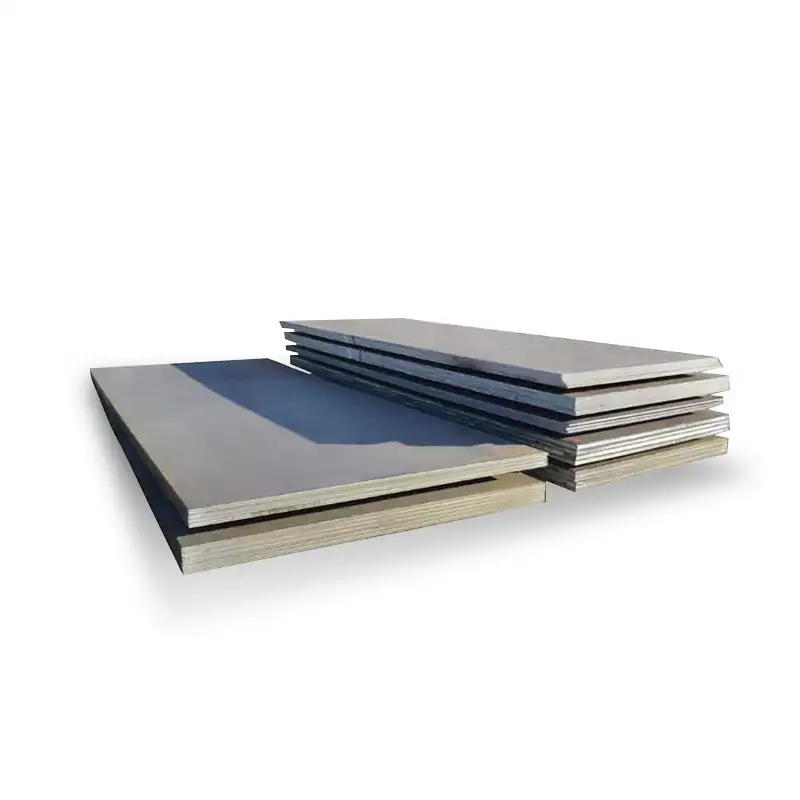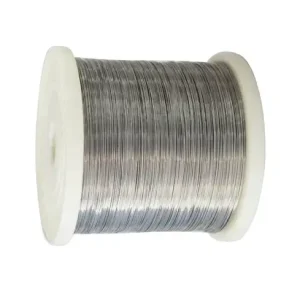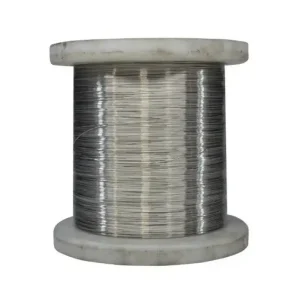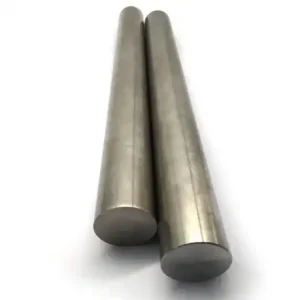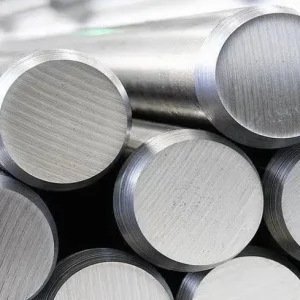DIN 17155 is a historic German specification for hot-rolled, boiler and pressure-vessel steels (commonly referenced as the “17Mn” / H / HII family). Today it is largely superseded in commercial practice by the European EN standards (EN 10028 series, e.g. P235GH / P265GH) and by international pressure-vessel specifications (ASME/ASTM A516 family) — but DIN-17155 grade designations are still used in procurement, legacy documentation and in many Chinese and global mills’ product lines. If you need reliably certified plate for welded pressure equipment, specify the required mechanical and impact requirements (temperature rating, yield, tensile, toughness and non-destructive testing) rather than relying only on the historical DIN number; modern equivalents such as EN-P265GH or ASTM A516 are preferred for new projects.
Historical background and scope of DIN 17155
DIN 17155 was a German (Deutsche Industrie Norm) specification that defined “boiler-quality” and pressure-vessel steels. It covered hot-rolled plate and strip for elevated-temperature service (boilers, pressure vessels, heat exchangers). Over time, European standardization consolidated these product specifications under the EN 10028 family (pressure-purpose steels such as P235GH, P265GH, etc.). Despite this shift, DIN 17155 grade names persist in supplier catalogs, project documentation and legacy procurement statements; many steelmakers in Asia still list “DIN 17155 HII / 17Mn4” in product offerings. For new procurement it is safer to specify EN or ASTM designations plus required mechanical/toughness values.
Common grades in DIN 17155 and typical applications
-
HI / HII / HIII (historic labels): pressure-vessel / boiler plates with minimum yield-strength and notch toughness requirements that vary with thickness and intended service temperature. HII is commonly seen in exports and product catalogs.
-
17Mn (17Mn4, 17Mn4CK etc.): nomenclature used in older DIN tables (the “17” indicating approximate carbon/manganese family). Typical use: welded boilers, pressure vessels, hot-service components where good notch toughness and weldability are required.
Applications: boilers, steam drums, fire-tube and water-tube boilers, heat-exchangers, pressure vessels in petrochemical and power industries, tanks for elevated-temperature service.
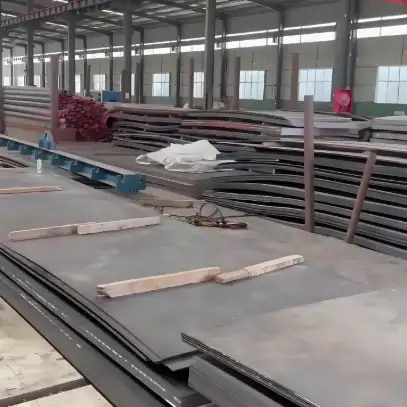
Key engineering considerations for pressure-vessel plate
When specifying or buying DIN17155 (or its modern equivalents) insist on explicit data for:
-
Yield strength (Rp0.2) and tensile strength (Rm) by thickness range.
-
Charpy V-notch impact energy at the lowest required service temperature (often −20 °C, 0 °C or specified lower).
-
Ultrasonic testing (UT) and/or radiographic acceptance levels.
-
Heat-treatment / delivery condition (normalized, normalized + tempered, hot-rolled).
-
Supplementary tests if service is sour / H2S environment (HIC / SSC tests).
These items must be declared in the mill test certificate and contract. The DIN designation alone does not communicate all of the above.
Chemical composition — practical industrial table
Note: DIN 17155 grades were not universally expressed with a single alloy chart across all mills; below is an industry-accepted representative composition for HII / 17Mn4 type pressure-vessel steels used when mapping DIN17155 to EN P-grades. Use the mill certificate for exact values.
| Element | Typical range (wt%) — DIN17155 HII / 17Mn4 (representative) |
|---|---|
| C (Carbon) | ≤ 0.18–0.20 |
| Si (Silicon) | ≤ 0.30–0.40 |
| Mn (Manganese) | 0.6 – 1.4 |
| P (Phosphorus) | ≤ 0.025–0.035 (max) |
| S (Sulfur) | ≤ 0.015–0.03 (max) |
| Cr (Chromium) | ≤ 0.10–0.30 (trace) |
| Cu (Copper) | ≤ 0.25–0.30 (trace) |
| Ni / Mo / V / Nb / Ti | usually ≤ 0.03–0.10 (not intentionally alloyed except in special grades) |
Why this matters: carbon, manganese and silicon dominate strength and weldability; phosphorus and sulfur are controlled for toughness. Exact composition varies by conversion to EN or ASTM equivalents and by mill practice. Always request the heat analysis on the mill test certificate (MTC).
Mechanical properties
Representative mechanical characteristics for a DIN17155 HII-style plate (converted to commonly quoted metrics). Always check the supplier MTC for the specific plate you buy.
| Thickness range (mm) | Min yield (Rp0.2) (MPa) | Tensile Rm (MPa) | Elongation A (%) | Min Charpy V (J) (typical service temp) |
|---|---|---|---|---|
| ≤ 16 mm | 265 | 410–530 | ≥ 22 | 27 J @ −20 °C (typical requirement) |
| 16–40 mm | 255 | 410–530 | ≥ 22 | 27 J @ −20 °C |
| 40–100 mm | 245 | 410–530 | ≥ 21 | 27 J @ 0 °C (thicker plates often lower) |
| 100–150 mm | 200–215 | 400–530 | ≥ 20 | Usually specified case-by-case |
These values line up closely with the P265GH family in EN10028, which replaced many DIN17155 specifications in commercial practice. Specify the required impact energy and test temperature; thicker plates often have reduced impact requirements.
Specification table — typical contractual / delivery conditions
| Item | Typical requirement / optional values |
|---|---|
| Standard referenced | DIN 17155 (historic) or EN 10028-2 (modern) |
| Delivery condition | Hot-rolled, normalized, normalized + tempered (negotiable) |
| Thickness tolerance | EN or mill tolerances per agreement |
| Tests & inspection | UT (full-length), mechanical tests (tensile/yield), Charpy V-notch, hardness, chemical analysis |
| Certification | Mill Test Certificate EN 10204 3.1 or 3.2 (3.2 for third-party witnessing) |
| Surface condition | Shot-blasted / painted / 1D-2D finish (as requested) |
| Non-destructive tests | UT / RT selection (per code) |
| Supplementary requirements | HIC / SSC for sour service; PWHT if welded and required by code |
Buyer advice: include a clause that states acceptance criteria for NDT and who pays for re-work, and require 3.1/3.2 certificates for pressure-equipment applications.
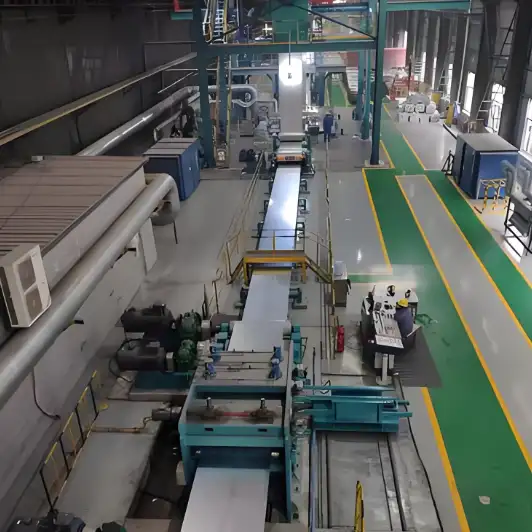
Equivalents table (DIN 17155 → modern EN / ASTM / BS mappings)
| DIN 17155 designation (historic) | Common modern equivalent(s) | Notes |
|---|---|---|
| 17Mn / HII / similar | EN 10028 P265GH, P235GH | EN10028 replaced many DIN17155 uses; P265GH closely maps to HII mechanical levels. |
| Boiler & PV plate (general) | ASTM A516 Grade 60 / 65 / 70 | Widely used in US/ASME contexts; select grade for required strength & toughness. |
| Older BS / national names | BS1501 (historic) | Older British standards also superseded; always convert to EN/ASTM equivalents when possible. |
Practical note: equivalence is for procurement mapping only. Design codes (EN 13445, ASME Section VIII, local national codes) specify acceptance criteria — match the mechanical and toughness values required by the code rather than relying solely on a label.
Manufacturing, heat treatment and fabrication notes
-
Manufacturing routes: hot-rolled plates are most common; controlled rolling or normalizing can improve toughness in thicker plates.
-
Heat treatment: normalization (or normalization + tempering) is used to refine grain size and improve toughness at elevated temperatures. Some EN P-grades are supplied normalized.
-
Welding: low carbon and controlled Mn help weldability. Preheat, interpass temperature and PWHT must follow welding procedure specifications (WPS) and the relevant code (ASME/EN) — PWHT is commonly required for thicker sections or certain service conditions.
-
Hydrogen embrittlement & sour service: if H2S exposure or hydrogen cracking is possible, request HIC/SSC testing and sulfide-stress cracking resistance per NACE/ISO test methods.
Quality, certification & inspection — what to require in the PO
For pressure equipment, insist on:
-
MTC EN 10204 3.1 or 3.2 (3.2 if a notified body or third party witness is required).
-
Full test block: tensile, Charpy V-notch (at agreed temperature), chemical analysis (heat analysis), and UT coverage report.
-
Traceability: heat number → plate → MTC mapping.
-
NDT acceptance criteria: specify UT or RT acceptance levels, weldability tests, and if required HIC/SSC tests.
-
Third-party inspection: by TÜV / Lloyd’s / DNV / BV where code requires it. This reduces risk on critical equipment.
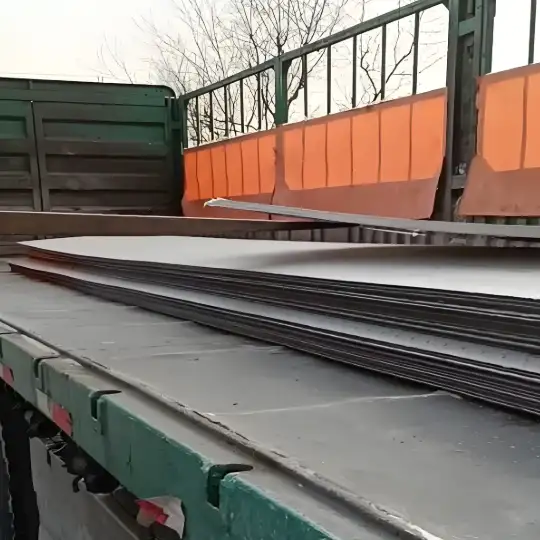
2025 Price comparison — United States / Europe / China
Important: steel market prices are volatile. The figures below are indicative market ranges observed in 2025 supplier / market reports and multiple trading platforms; use them as ballpark procurement planning figures, and always request an up-to-date official quote and INCOTERMS.
| Region | Representative price range for pressure vessel plate (USD / metric ton, FOB/EXW ranges seen in 2025) |
|---|---|
| United States (domestic plate) | ~USD 900 – 1,400 / t (plate grade dependent, ASME A516 and specialty plates higher). |
| Europe (EU mills / ex-works) | ~USD 1,000 – 1,600 / t (EN certified P-grades; higher for controlled/normalized & third-party certified material). |
| China (export / FOB China) | ~USD 450 – 1,200 / t (wide spread — commodity low end is lower, controlled normalized or fully certified pressure-vessel plate toward the upper range). Example trading listings show some Chinese supplier quotes in the US$450–1,200 / t band depending on grade, thickness and test scope. |
How to read these numbers: low quotes often reflect minimal testing / lower impact requirements and simple hot-rolled plate; higher quotes reflect normalized delivery, lower Charpy test temperatures, third-party inspection and guaranteed mill capability.
Why choose MWAlloys supplier
MWAlloys is a specialist plate supplier focused on pressure-equipment steels for industrial fabricators. We maintain factory stock of pressure-grade plate (modern EN P-grades and historical DIN 17155 equivalents) and can supply:
-
100% factory (mill-direct) pricing with competitive EXW/FOB terms;
-
Short lead times from Chinese stock (typical stock delivery 7–21 days depending on size & certification);
-
Full documentation (EN 10204 3.1 / 3.2) and third-party inspection options (TÜV/DNV/LR);
-
Supplementary tests available on request: Charpy at specified temperatures, HIC/SSC and UT full-length reports.
If you are procuring pressure-vessel plate for ASME or EN projects, MWAlloys can produce formal quotes with exact MTC data, mill process records and delivery lead-time for the specific grade / thickness you require.
Practical buyer & fabricator checklist
-
Define required service temperature and lowest design temperature → set Charpy V temperature accordingly.
-
Specify mechanicals by thickness bands (Rp0.2 / Rm / elongation) and required toughness.
-
Choose standard: EN10028 (P-grade) or ASTM A516 (ASME) — don’t rely solely on “DIN17155” label.
-
Require EN 10204 3.1/3.2 documentation and mill heat analysis.
-
Specify NDT acceptance levels and whether HIC/SSC tests are needed.
-
Clarify delivery condition (normalized? controlled-rolled?).
-
Confirm mill capability and past records of supplying the exact grade to your code.
-
Request sample plate thickness / coupon for qualification welds if critical.
FAQs
1. Is DIN 17155 still a valid specification for new equipment?
DIN 17155 is legacy; in most modern procurement EN 10028 (P-grades) or ASTM/ASME standards are preferred. Use DIN 17155 only if contractually required, and map mechanical and test requirements explicitly.
2. What is the closest modern equivalent to DIN 17155 HII?
EN 10028-2 P265GH (or P235GH depending on required yield) is the commonly adopted modern equivalent for many HII applications; however check toughness and heat-treatment targets when mapping.
3. Can I substitute DIN 17155 plate with ASTM A516?
Substitution is possible if tensile/yield and toughness requirements meet the design code. ASTM A516 grades are typical in ASME practice; conversion requires verification of Charpy temperature and thickness behavior.
4. What tests must appear on the MTC for pressure-vessel plate?
At minimum: heat analysis, tensile test, Charpy V-notch (at specified temp), UT/RT report (as specified), and EN 10204 3.1/3.2 certificate when requested.
5. How does plate thickness influence Charpy requirements?
Thicker plates can have lower guaranteed Charpy energy and higher minimum yield reduction; therefore the purchaser must specify impact energy by thickness bands needed for safe operation.
6. Are Chinese DIN17155 listings reliable?
Many reputable Chinese mills produce to EN/ASME equivalents and list DIN17155 for legacy reference. Verify the mill’s certification history, request MTCs and (for critical equipment) third-party inspection.
7. Do I need PWHT after welding DIN17155/P265GH plate?
PWHT depends on code requirements and service conditions; for many carbon-manganese pressure steels PWHT is not mandatory for moderate thicknesses but may be required for higher thicknesses, certain weld procedures or elevated temperature service.
8. What are common non-conformances to watch for?
Missing or incomplete MTCs, incomplete NDT coverage, reduced Charpy performance on delivered plates, incorrect thickness tolerance, or mis-labeling of grade/heat number. Always cross-check plate marking to MTC.
9. Are there special corrosion tests I should ask for?
For sour service, request HIC and SSC testing; for chloride environments consider corrosion allowance and coatings. These tests are supplementary and must be specified in the order.
10. How to ensure pricing comparability between suppliers?
Request identical scope: grade, thickness, delivery condition (normalized / hot-rolled), MTC level (3.1 vs 3.2), UT/RT scope, packing & shipping INCOTERMS. Only compare like-for-like quotes.

